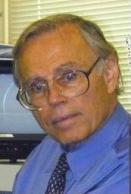Awardee Interviews | Biography: Ernst Bauer
Ernst Bauer

Ernst G. Bauer received his MS (1953) and PhD (1955), both in physics, from Munich University, Germany. In 1958 he moved to the Michelson Laboratory in China Lake, California, where he became Head of the Crystal Physics Branch and U.S. citizen. In 1969 he accepted the position of Professor and Director of the Physics Institute at the Technical University Clausthal in Germany. In 1991 he was appointed Distinguished Research Professor at the Arizona State University, where he performed research on a part-time basis until 1996 in addition to his full-time duty in Germany. Since 1996 he is full-time at the Arizona State University. His interests have been in surface science and thin films. He derived in 1958 the classification of the thin film growth mechanisms, which he called Volmer-Weber, Stranski-Krastanov and Frank-van der Merwe mechanisms. This provided the theoretical thermodynamic framework used to understand epitaxy worldwide to this day. In 1962 he invented LEEM (Low Energy Electron Microscopy), which came to fruition in 1985. LEEM is a unique surface imaging method. The most important advantage of this technique is its ability to observe surface structure and dynamic processes in real space and real time at sample temperatures up to 1500 K. In the late eighties/early nineties he extended the LEEM technique in two directions by developing two new surface microscopy methods: Spin-Polarized Low Energy Electron Microscopy (SPLEEM) and Spectroscopic Photo Emission and Low Energy Electron Microscopy (SPELEEM). Using these methods a comprehensive (structural, chemical, magnetic, electronic) characterization of surfaces and thin films on the 10 nm scale is now available, that is worldwide unique. Currently he is interested in using Synchrotron Radiation, which resulted in his involvement in the development of the Nanospectroscopy beamline at the synchrotron source Elettra in Trieste. An important recognition for his efforts in the field of surface microscopy is the increasing number of the scientists involved in LEEM research, which is reflected in the organization of bi-annual LEEM/PEEM workshops. The first international LEEM/PEEM workshop was organized in 1998 in Arizona State University, followed by a second one in 2000 in Paris, a third one in New Mexico in 2002, the fourth in Holland in 2004 and the fifth in Japan in 2006. More than thirty LEEM instruments are now installed and operating in many laboratories and synchrotron radiation facilities around the world (USA, Europe, Asia, Australia). Ernst Bauer built up the reputation of Arizona State University as a center of surface electron microscopy, thus broadening its international reputation in electron microscopy in general. His scientific interests cover a wide range from pure science to development of new instrumentation. His work directly or indirectly impacts many areas of modern material science: surfaces, thin films, electronic materials and instrumentation. The invention and development of the surface microscopy with slow electrons has completely revolutionized the study of surface science and thin film science. Ernst Bauer authored or co-authored more than 400 publications (among them 82 review papers and book chapters) and one book ("Electron Diffraction: Theory, Practice and Applications", 1958, in German). His papers are widely cited. In September 2007 Ernst Bauer has about 10000 citations with a Hirsch factor of 49-50. He has been for many years in the Advisory Board of Surface Science and is currently on the Editorial Board of physica status solidi (a). He served on the International Advisory Committee for a Grant-in-Aid Project of the Ministry of Education and Science in Japan and is presently a member of the Scientific Advisory Committee of the Advanced Light Source (ALS Berkeley, California). He is also a member of the International Advisory Boards of several periodic conferences. He was a visiting professor at the IME in Rio de Janeiro, at the University of Pretoria (South Africa), the University of Wisconsin-Milwaukee, Arizona State University, Synchrotron Radiation Source in Trieste, Italy and had longstanding scientific cooperation with NASA, Poland, Ukraine, Bulgaria, and Czech Republic. About 80 scientists had a possibility to perform high quality research in his group in Germany (53 of them from the European socialistic countries). Presently he has collaborations with Japan, Poland, Italy, Germany and Hong Kong. Among other honors, he has received the E.W. Muller Award in 1985, the Gaede Prize of the German Vacuum Society in 1988, the Medard W. Welch Award of the American Vacuum Society in 1992, the Niedersachsenpreis for Science (Germany) in 1994, BESSY Innovation Award on Synchrotron Radiation in 2004 and the very prestigious Davisson-Germer Prize of the American Physical Society in 2005. He was elected a Member of the Goettingen Academy of Sciences in 1989, Fellow of the American Physical Society in 1991 and Fellow of the American Vacuum Society in 1994. In 2003 Ernst Bauer received the first Award of the Japan Society of Promotion of Science's 141st Committee on Microbeam Analysis and was made an honorary member of this organization. Details about the recent honors can be found in the ASU News and in the Department of Physics and Astronomy Newsletter (Winter 2005).